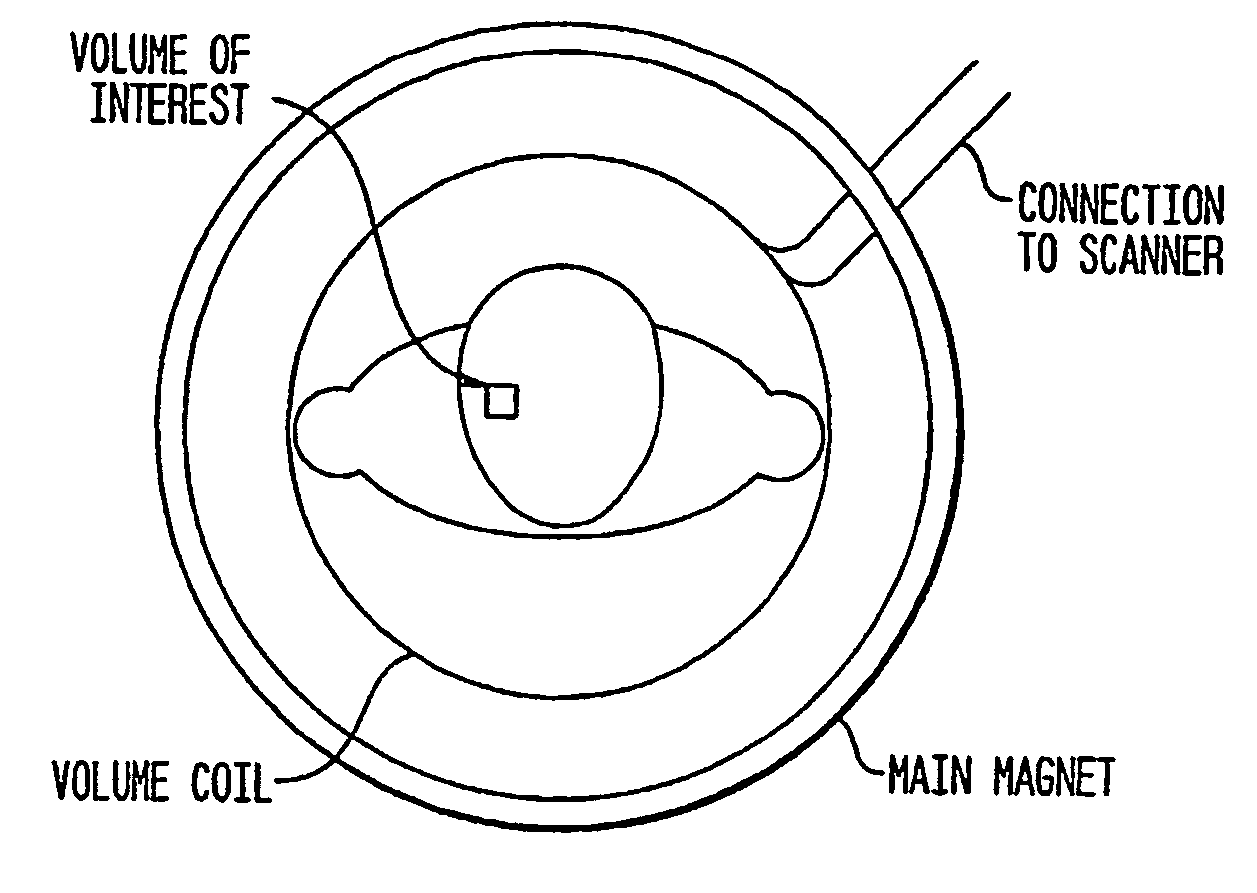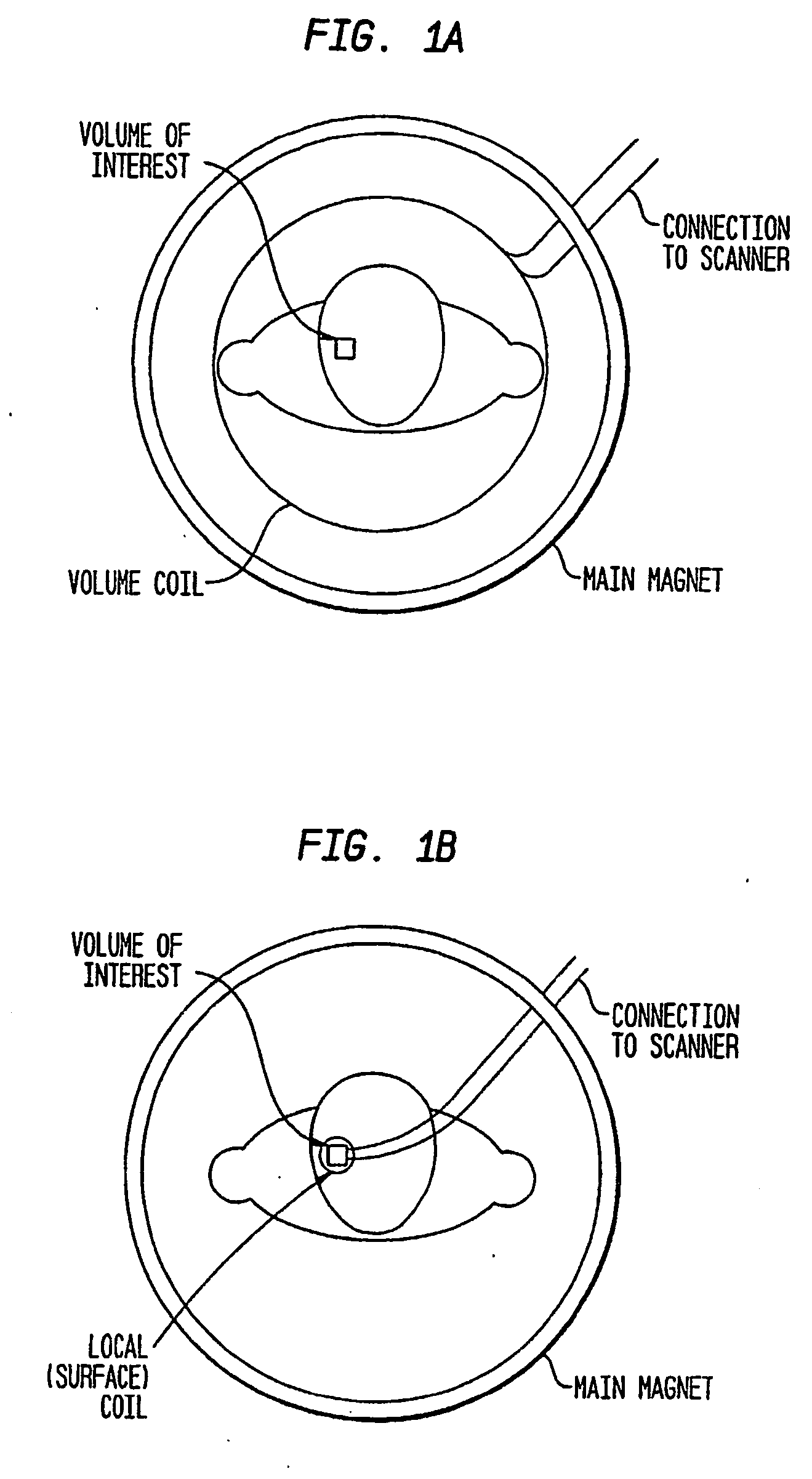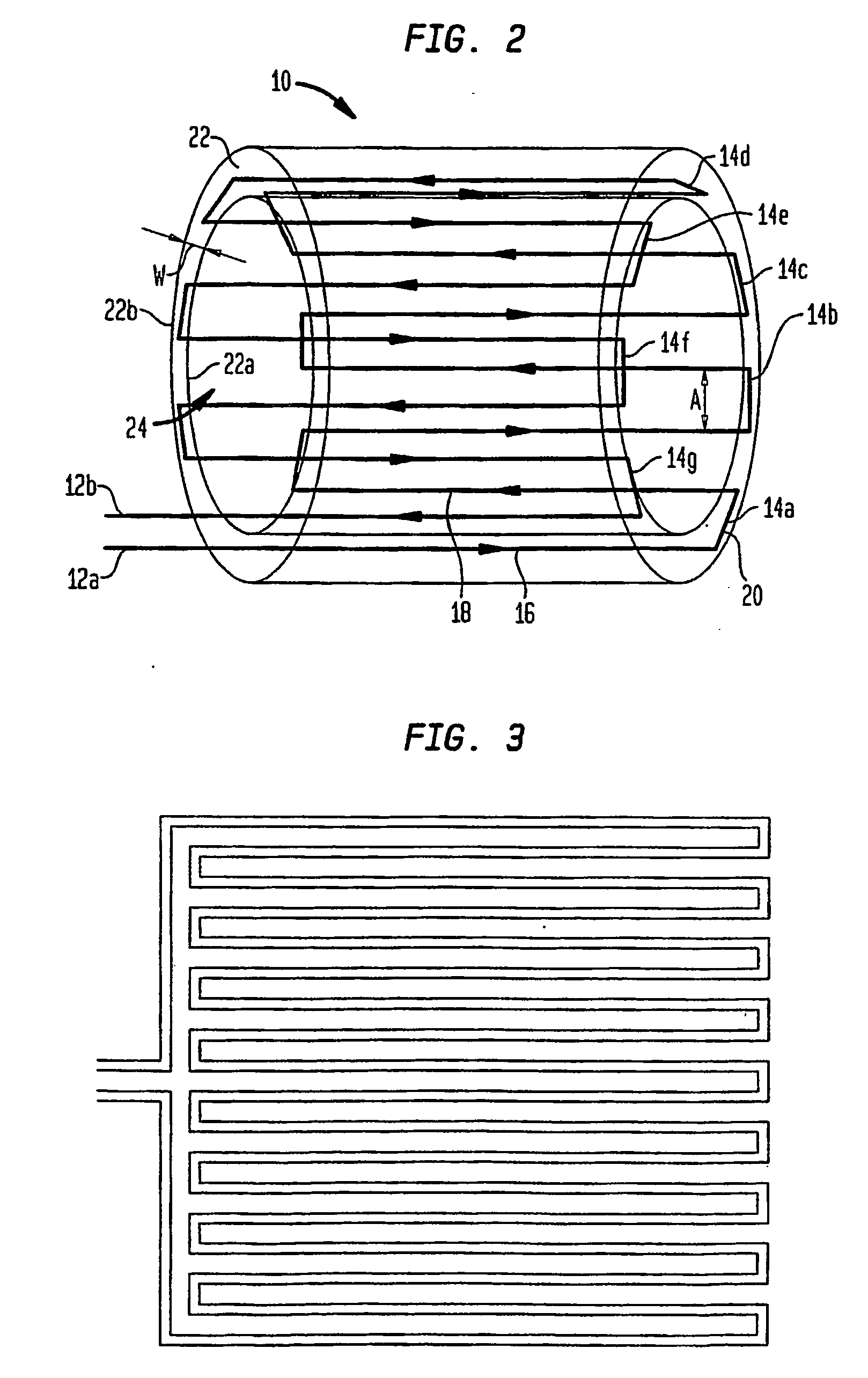Radiofrequency coil and catheter for surface nmr imaging and spectroscopy
a radiofrequency coil and surface nmr technology, applied in the field of magnetic resonance (mr) spectroscopy and/or imaging, can solve the problems of poor filling factor, motion artifacts, and concentrated volume of sensitivity near the exposed wir
- Summary
- Abstract
- Description
- Claims
- Application Information
AI Technical Summary
Benefits of technology
Problems solved by technology
Method used
Image
Examples
Embodiment Construction
[0063] In one aspect, the present invention provides coils that can be utilized for magnetic resonance imaging and spectroscopy of biological tissue, for example, arterial plaques or blood clots. A coil according to the teachings of the invention can be incorporated into a flexible catheter that can navigate through a patient's artery to place the coil in proximity of the biological tissue to be imaged. The coil can generate magnetic fields, in response a current flow therethrough, that can excite selected nuclear spins within the interest, and can detect signals generated by the spins in response to the excitation. Alterntively, another coil, e.g., a coil in a magnetic resonance scanner, can be employed to excite the nuclear spins, and the intravascular coil can be utilized to detect signals generated by the spins in response to the excitation.
[0064]FIG. 2 schematically illustrates an exemplary cylindrical meanderline coil 10 according to the teachings of the invention that can be...
PUM
 Login to View More
Login to View More Abstract
Description
Claims
Application Information
 Login to View More
Login to View More - R&D
- Intellectual Property
- Life Sciences
- Materials
- Tech Scout
- Unparalleled Data Quality
- Higher Quality Content
- 60% Fewer Hallucinations
Browse by: Latest US Patents, China's latest patents, Technical Efficacy Thesaurus, Application Domain, Technology Topic, Popular Technical Reports.
© 2025 PatSnap. All rights reserved.Legal|Privacy policy|Modern Slavery Act Transparency Statement|Sitemap|About US| Contact US: help@patsnap.com



